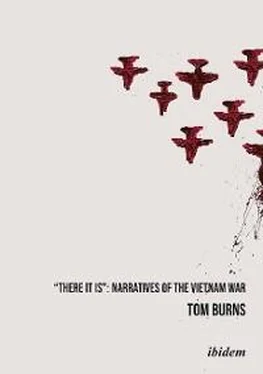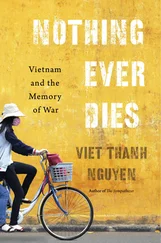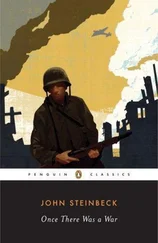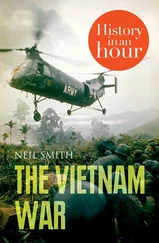The refugees are made to convert their money to the new Viet Minh currency, stamped with the image of Ho Chi Minh. Nam feels satisfied that he gets back almost twice the amount in the exchange, but the merchant laughs at him: “The Vietminh will send money they got from you south and buy goods in Saigon. What you gave up was better money” (64). On a bus, the driver and guard stop at regular intervals to shake down the passengers, who must pay for the handfuls of rice they eat as well as so many piastres per kilometer traveled; those without money have to get off the bus. Nam’s book, one of his few possessions (a classic given him by his father) arouses suspicion in these illiterate peasants. They confiscate his jade crucifix as well as the book, and try to extort more money, but he has slyly distributed his money on different parts of his person to avoid losing it all. He does not waste time lamenting his losses: the “book had lost him a ride and a costly crucifix. He was well rid of the book” (90).
As he pursues his journey, “The sign of war was everywhere, and it was a negative sound: a lack of sound…no yapping or clucking or trumpeting” (91). When a group he travels with arrives at Than Hoa, they listen to a speech that will be heard repeatedly along the road. Refugees do not reach Saigon as the French promise, they are told, but are shipped to Africa, “a land of savages where men are strangled when too old for work. Americans, who have developed a great bomb, need more victims for testing: “that was why American ships were at Haiphong—to buy Viet slaves from the French” (105). These stories have an impact on the ignorant refugees, as do the myriad rumors that pop up whenever a new place is reached or new event takes place. In their insecurity and fear, these people are always prepared to believe the worst, and rumor campaigns prove to be an effective way to make them give up their plans to migrate south. Remembering the stories of old men in his home village, however, Nam is always skeptical: “Words but no medicine: that was what Nam was learning to expect from commissars. Words but no food. Words and detours, words and robbery, words and the vanity of peasants” (110). He thinks that the Commissars are no different from the priests: “Have faith...that’s what the le Commissaire says” (113).
The father of Lia, a woman he loves, dies. “To Nam that was a truth easier to grasp than the truth of seers, and of priests. Here was death. He had seen it before…There was solace for him in this lack of mystery” (116). He buries the old man and on the same night Lia gives herself to him and it is understood they will be man and wife. He accepts the gift of her father’s Japanese knife: “Think of it as the gift I would bring you from my father” (118), but he loses her in the confusion resulting from a botched escape by boat. “How foolish to accept a plan which so obviously had been devised blindly, out of greed not sense” (135), he chides himself. At Ninh Binh, further up the coast, he seeks out a man, Ton, who had known his father. The house is ramshackle from the outside, which turns out to be a clever disguise: “That a life of such luxurious calm lay behind the shabby façade of this house was a source of great wonder to Nam.” (144). The cunning, widely traveled Ton has achieved a separate peace with the enemy. “This too Nam admired: old Ton could hate the Vietminh and still live comfortably with them” (145). As Ton explains, “A man who feeds his enemies has no worry.”
Nam befriends a young man named Hai, a small-time thief and confidence-man with his own methods of survival. The two men become involved in another escape operation, but once again the operation is betrayed and soldiers appear on the beach just as the party is ready to sail. The boat takes a few hits but manages to pull away while Hai runs into the fishing-village, making a lot of noise to draw off the soldiers. With luck, the boat reaches the islands at the mouth of the Red River a few kilometers from Haiphong and is picked up by a French patrol boat. In fact, the refugees have made it to the port of North Vietnam right before the Viet Minh takeover. Nam realizes that now that he is out of their zone he can use his family name again, which is all that he has left in the world now that he has lost his land, family, woman, and friend.
In Haiphong, Nam is reminded of how far he has come in both distance and experience: “When a man left a place, all he could keep of it was a vague memory. Even if it had been the source of his life, now, away from it, it was only a detail or two—perhaps the image of a cedar in a field” (185). Memories are also insufficient to sustain a difficult present life and uncertain future. To buy food, the always pragmatic Namnamn decides to sell the Japanese knife that Lia had given him: “He would sell it because a gift from one’s woman was not worth much without the woman—not when life made money worth more than memory” (191).
The refugees are taken to a camp where they are sheltered in American-made tents designed for fifty people but packed with a hundred. Wild rumors proliferate: Chinese gunboats have machine-gunned thousands of people; the Vietminh are going to break the treaty and kill everyone in the camp; an epidemic is devastating another camp and would reach this one within days, and yet some people, frightened of what is to come, refuse to leave: “They grew fat and became the chief critics of the camp and slept most of the time” (199). A soldier who fought with the French tells stories about the Americans that Viet Minh propaganda could hardly improve on: “They worshipped a god of cleanliness, these Americans, and so if a man vomited on their ships, they cut his hands off…When their officers got hungry and wished for something special, they cut up a child and ate it” (201). On the way to the boats, the stories and rumors circulate unabated: the D.D.T. that the refugees are sprayed with is made of “terrible spirits” that will determine who can ship out: “the smoke kills off the weak.” A man harangues the frightened people with a description of a Viet Minh poster he has seen of the American ships: “the boats in the poster had their fronts open upon the water and were tipped, spilling people into the sea” (223).
The third phase of the narrative, the sea journey, lasts a week. The American crew is completely unaware of what is going on with their passengers: “They did not know a man had been murdered, or to what extent some passengers had been threatened by black marketeers” (225). The murder victim was extorting the navy-issued food from the passengers and then selling it back to them at high prices. A group of disgruntled men, urged on by a priest, get together and throw the fat man overboard. Everyone had expected the Americans to punish the exploiters, but to the general disappointment, “Americans show no more pride than dogs…Americans did not have the courage to punish men who made fools of them” (237). The reader understands that the Americans either did not know or were indifferent to these events, another example of narrative “estrangement.”
At their arrival in Saigon, the final stage of the narrative, the refugees are greeted with a brass band and a speech from the mayor but then left to their own devices. Nam’s suspicions about the good treatment on the sea voyage makes him think that “there was one reason for such good treatment—get cheap labor for the camp in Saigon” (247) and he jumps off the truck to avoid that fate. The south turns out to be inhospitable to northern refugees. After Nam runs out of money and has to find work, he decides to become a trishaw driver but the other drivers run him off, having no desire to share their customers from what they see as the riff-raff “off the boats” who threaten their livelihood. Nam resorts to begging, which turns out to be hard work. Once more, rather than lament his fate he adapts, learning the best attitudes to strike, the best places to beg (near bars, casinos, and brothels), and the best human types to beg from (Americans are best, although, in his pride, he cannot bear the contempt they have in their eyes), the Singhalese, sometimes the French; the worst are the Algerians, who kick him).
Читать дальше












